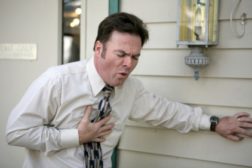Home » Keywords: » patients
Items Tagged with 'patients'
ARTICLES
Feds want doctors to recommend more exercise
Read More
Drug-resistant bacteria spreading in U.S. health care facilities
Experts say fast action needed to combat it
March 8, 2013
New study: Burnout plagues physicians
Doctor warns of threat to patients; offers tips
December 11, 2012
Emergency treatment for heart attack improving
But study says delays still occur
September 20, 2011
Become a Leader in Safety Culture
Build your knowledge with ISHN, covering key safety, health and industrial hygiene news, products, and trends.
JOIN TODAYCopyright ©2025. All Rights Reserved BNP Media.
Design, CMS, Hosting & Web Development :: ePublishing




